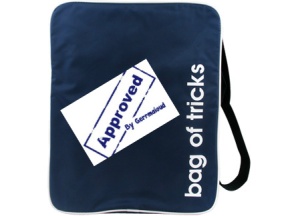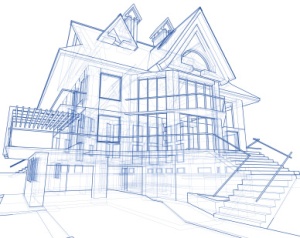These four loans may be off your radar, but they can save you big bucks depending on your home-buying situation and the Broker you chose to Acquire your mortgage.
Buying a home is one of the biggest investments you’ll ever make, so it’s no wonder there are plenty of mortgage options for financing your purchase.
Unfortunately, some loan officers or bank employees may be less forthcoming with your mortgage options, ( Not I ) especially if the loan requires extra steps for securing approval, says Gerrmaioud Chape loan officer with Absolute Home Mortgage Inc. in New Jersey. Sometimes programs are new and misunderstood by lenders as well.
Whatever the reason, you deserve to have all the cards on the table when deciding what home loan is best for you. The good news? We’ve targeted a few of the lesser-known loans and asked lending pros to explain their terms and suggest who might benefit from them.
Read on for a list of loans you may have overlooked – and why you may want to pay closer attention to them.
Mortgage #1: The FHA 203 (K) Loan
Have you always wanted to turn a fixer-upper into a dream home, but don’t exactly have the extra cash lying around to make it happen? If so, the FHA 203 (K) loan could be right for you.
According to Doud, the FHA 203 (K) program is a rehabilitation loan made through government-approved lenders, but insured by the FHA. The loan allows borrowers to rehabilitate a home and include the renovation costs in the mortgage. This loan is great if you’re tight on dough, says Doud, because down payments are often lower in this program and those approved often qualify for a larger loan sum since the home appraisal is calculated using the price of the home after the renovation work is completed. (Note : Gerrmaioud at Absolute Home Mortgage is an expert with these loans and can even go as far as helping you to secure a contractor that fits your specific needs.)
Why it’s under-the-radar: “The FHA 203 (K) loan is intimidating to many loan officers because of the extra steps during the mortgage process,” says Doud. “Therefore, many do not want to bring this option up.” So if you’re looking at a house that’s got a great price tag, but needs major work to be habitable, or you’re a current homeowner whose house needs a repair or addition and you could refinance with this loan, best to bring up the FHA 203 (K) instead of assuming your loan or bank professional will.
Who benefits and how big: “The FHA 203 (K) is a great option,” says Doud, particularly for someone who wants to buy a home, make repairs, and needs to borrow money to do it. “Prospective buyers can buy a home at a reduced cost [because it needs work] and improve the value of it by fixing the property up.”
Mortgage #2: The 10-Year Loan
In the world of mortgages, two numbers tend to get all the attention – 30 and 15. These figures refer to the duration of payments for two of the most common mortgages. That is, one payment plan that spans 30 years and one that’s half as long at 15 years. But have you ever heard of the 10-year plan? Think of it as the 30- and 15-year loans’ faster brother.
Why it’s under-the-radar: “To pay a mortgage off in 10 years is going to greatly increase the monthly payment,” says Doud. This may prevent loan officers from bringing it up in the first place, particularly for clients who may be first-time homebuyers who are not used to making sizeable monthly payments. “Typically most people can’t afford it.”
Who benefits and how big: If you’re thinking of refinancing and are comfortable with a short-term loan – meaning you have the job security and cash flow to afford larger monthly payments – this loan option could be for you, says Doud.
“A 10-year dramatically reduces the interest paid over the term of the loan, even beyond what a 15-year offers,” says Robert Spinosa, a home loan professional.
Additionally, if you’re headed for retirement, this mortgage may be especially advantageous. “I think it’s a great tool when a borrower is nearing retirement and has also addressed the other categories pertinent to financial well-being,” says Spinosa. In other words, if you have more money saved up from working, paying off your home at a faster rate may be easier as you get closer to retirement.
Mortgage #3: Conforming Adjustable-Rate Mortgage (ARM)
You may have heard of adjustable-rate mortgages, or ARMs, where the interest rate at which you pay back your loan can fluctuate (based on the market) throughout the duration of the loan. If you’ve overlooked this loan due to fear of the volatile market, you may want to take a step back. Depending on your circumstances, ARMs could be the most cost-effective option for you.
Why it’s under-the-radar: Quite frankly, after the last housing crisis, ARMs got a bad rap after rates shot up and homeowners were unable to pay their new, higher monthly payments. But there are various ARM products available that may offer less risk for borrowers. Hybrid ARMs, for example, have a period of fixed interest rates, while conforming ARMs actually have caps on the amount that rates can go up or down.
Who benefits and how big: “The lower initial payments are the biggest benefit,” says Doud. So, if you’re only planning on being in your home for a short period of time, taking advantage of the lower initial rates could be extremely beneficial for you.
“Someone that plans on moving during the fixed-rate period of a hybrid ARM would benefit most because they will pay less interest than the fixed rate,” adds Doud.
Mortgage #4: Equity Share Down Payment Funding
If you’re having trouble coming up with a down payment, you may want to consider an equity share down payment funding.
With this option, Spinosa says a lender will match the borrower’s down payment funds up to 12.5 percent in exchange for a percentage of future gains when the home is eventually sold.
“The equity share company provides funding with no payments or interest charged on the matched down payment,” says Spinosa. “But the lender will capture a percentage of the appreciation when the home is eventually sold.”
But be aware that the equity share arrangement works both ways. If there is depreciation over time, Spinosa says, it is shared between the homeowner and the equity share company at the time of sale.
“Homebuyers are informed up front that should they sell within the first three years, there are limitations on what can be realized both up or down,” says Spinosa. “The equity share arrangement’s purpose is to be a longer-term solution. It is not intended for investors or those who wish to flip the property quickly.”
Why it’s under-the-radar: “The equity share is fairly new, and that’s why most do not know about it,” says Spinosa. “It’s something that would clearly not be marketed in an environment where home prices could be declining.”
Who benefits and how big: “This program benefits those who either don’t have the funds needed for the down payment or who don’t wish to part with all of those funds for whatever reason,” says Spinosa. “They do have the income to support the loan, however.”
He sees this type of loan helping those who want to purchase in desirable neighborhoods where the down payment can keep some on the sidelines, even when they may be earning great salaries and bonuses.




